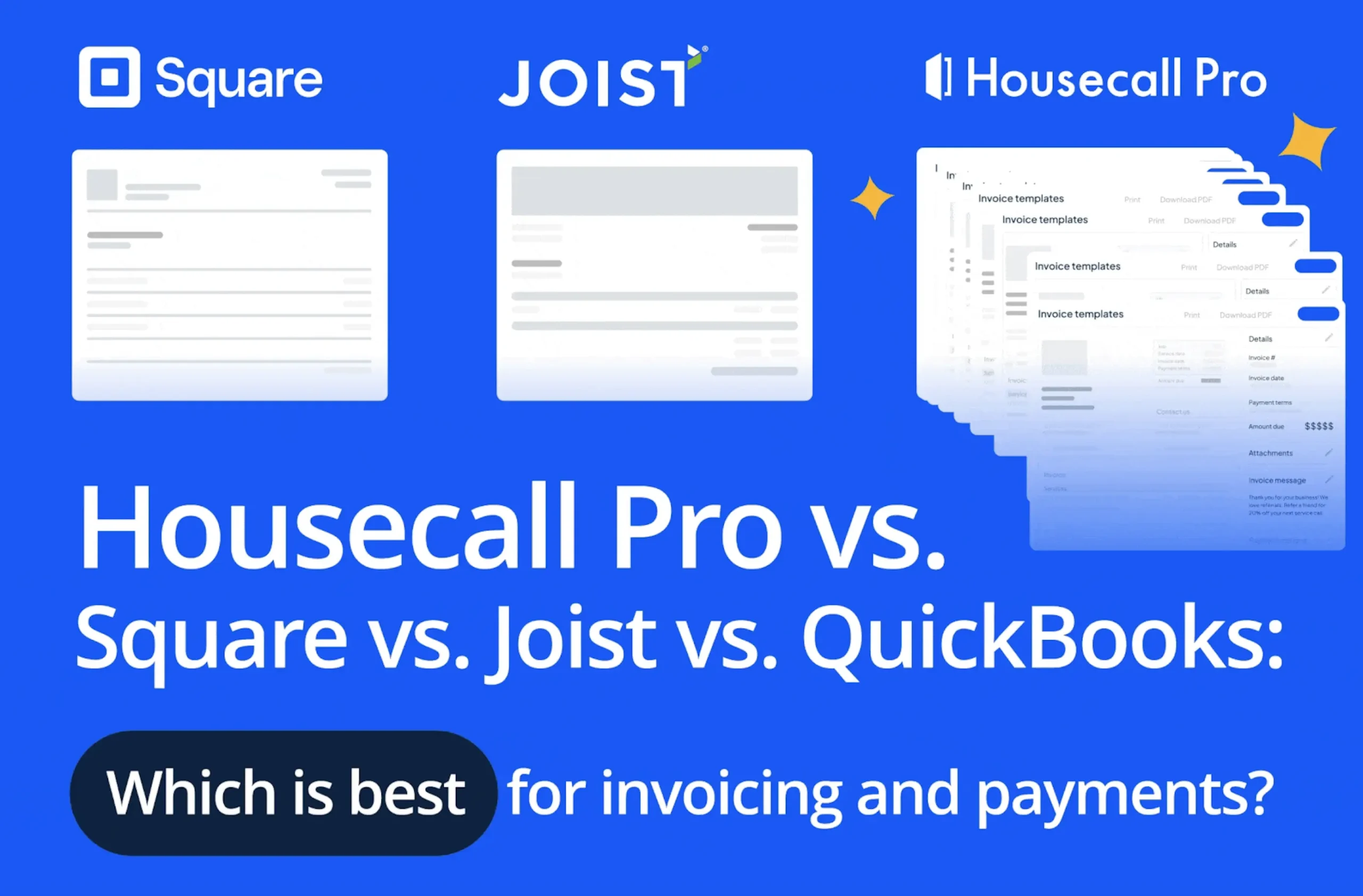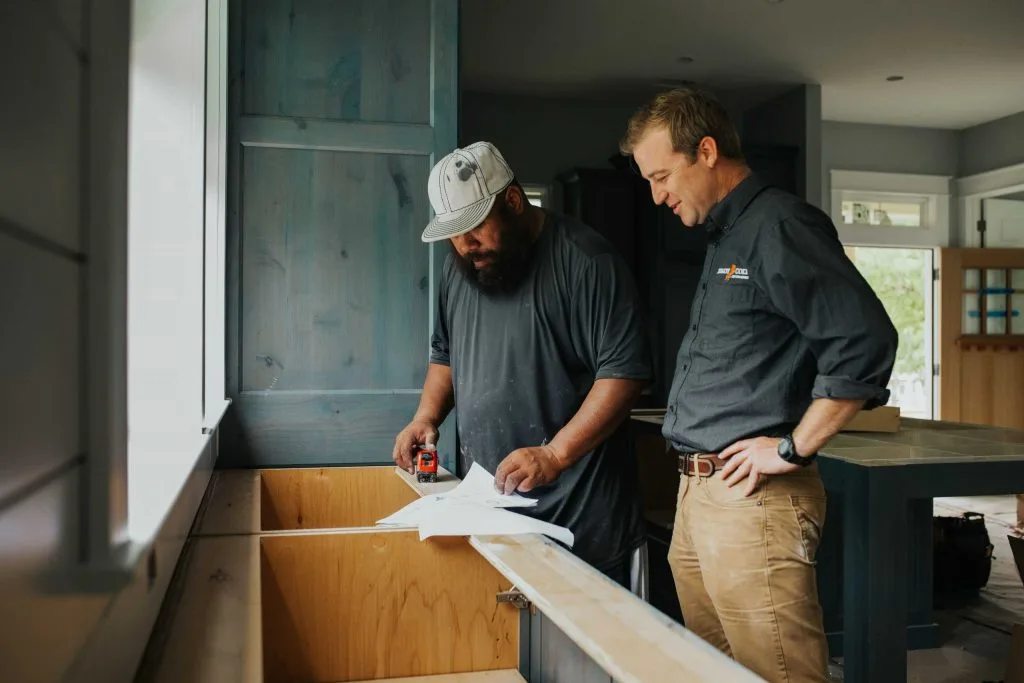
A knockout sales proposal can make all the difference between landing or losing a job. A truly well-written proposal is far more than just a formal document containing the nitty gritty details: it’s your chance to prove just how your business can solve the client’s problem. Your proposal should inspire confidence, develop trust, and make it a breeze for your clients to choose you.
So, how do you write a sales proposal that is too good to pass up? Here’s what you need to know (plus a free template to make creating polished proposals easier than ever).
What is a Sales Proposal?
A sales proposal is a form that represents your solution to a potential client’s problem. It outlines how you can help, serving as both a pitch and a blueprint for how you plan to provide value.
Think of these proposals as your chance to break away from the pack and separate yourself from other businesses in your city and industry. It should definitively present your understanding of the client’s needs and how you’ll care for them. All of this information should be wrapped into a neat, polished, and professional package that works to build trust and set you up as the obvious best choice for the job.
Goals of Sales Proposals
As the name itself suggests, the whole purpose of a sales proposal is to successfully sell your services. Its objective is to win clients’ business, converting them from potential clients to actual ones.
In providing a clear, compelling, and customized solution, you give your client a clear understanding of why your services are worth the investment. On top of that, the proposal helps establish cornerstones of integrity and dependability, set clear expectations, and streamline the client’s decision-making process.
Elements of a Successful Sales Proposal
A sale proposal needs to have a handful of essential elements to earn success status. These components include:
- A cover letter that briefly introduces you and your business and how you can help.
- An executive summary that underlines the main problems the client faces and how your services are the perfect solution.
- A well-defined scope of work that outlines the deliverables and services you’ll provide.
- A value proposition that calls attention to your business’s expert status and why the client should choose you.
- A price breakdown that offers a crystal-clear, line-by-line quote with all costs involved.
- A project schedule, including major points, phases, or dates to provide clarity.
- Terms and conditions, such as payment and cancellation, in understandable language.
- A call to action to close out strong and encourage clients to follow up with you.
Bonus Features to Make Your Proposal Sparkle
Your client might receive more than a few proposals, sometimes even dozens or, in some cases, hundreds of proposals. So, when you’re composing yours, consider adding a few extra details to help your proposal sparkle in a sea of dull, standardized options.
Tie in case studies or client reviews that tell the tale of real-life success stories. These help add credibility and inspire confidence in your services.
Or, show off your team’s expertise, highlighting qualifications and extensive experience. Potential clients want someone who knows how to do the job (hence why they’re seeking your services), so showing your team’s proficiency can add an extra burst of confidence in your business.
How to Write a Sales Proposal That Gains a Client’s Trust
A successful sales proposal that gains a client’s trust should demonstrate your clear comprehension of their needs, articulate how you’ll solve those needs, and set you as a dependable service provider. In listening to the client’s goals and providing clear, no-nonsense details, you situate yourself as a trustworthy partner.
So, how do you write a sales proposal? Here’s your complete, step-by-step guide:
1. Cover Letter: Give Them a Crash Course in What to Expect
First and foremost, start with your cover letter. Use a warm, friendly tone, tailoring the introduction to your client’s unique needs. Keep this part brief and to the point: a greeting that addresses the client by name, a summary of their needs, and a quick overview of your solution.
Example:
Dear Mike,
I hope you are having a wonderful week! My name is Josh Smith, owner of Smith Construction. Based on our first meeting, we understand your priorities include [list key client needs]. This proposal outlines how our specialized services can address these issues and deliver the results you’re looking for.
At Smith Construction, we take pride in helping clients remodel their homes to match their dream features. We’re thrilled about the prospect of helping with this project and making your dream a reality. Please don’t hesitate to reach out with any questions as you review the enclosed proposal.
Warm regards,
Josh Smith
Owner of Smith Construction
000-000-0000
2. Executive Summary: Solve Their Problem in One Go
Next, focus on your executive summary. Acknowledge the problem the client is facing, empathizing with them and showing that you truly get their specific needs. Then, branch into explaining how your services will solve whatever problem they’re facing.
Keep this section brief. It’s your elevator pitch and should only contain one or two paragraphs max.
Example: “We know dealing with unexpected heating issues can be stressful, especially during the winter. That’s why our expert HVAC services are designed to stay comfortable year-round. Whether you need a repair, maintenance, or full system replacement, we simplify the process and deliver reliable solutions to ensure your system can keep your home cozy and warm.”
3. Scope of Work: Define Exactly What You’ll Do
List the specific services you’ll be providing, dividing them using points to break the details into more manageable and easily scannable pieces. Avoid vague, unclear language. Blunt specificity is a sure way of erasing gray areas that could be misconstrued through ambiguity.
Set explicit boundaries to further drive your points home, defining what’s included versus what’s not included to manage expectations. For example, your executive summary might look something like this:
Here’s what’s included in your project:
- Weekly consultations to track progress
- Customized reports, delivered every Friday
- Full installation and setup of new HVAC system
Learn more: Best business proposal apps to help you land more business.
4. Value Proposition: Show Why You’re the Best Fit
This portion of your proposal should cover why you’re the best choice for the client’s needs. What makes your approach or product different? What gives you an edge over the other competitors that, like you, may send the client a proposal?
Include evidence that backs up your statement of being the best choice. This could include testimonials, case studies, or success stories. Focus on results, emphasizing how your solution will save the client time, slash costs, or improve overall efficiency.
Example:
“Our expert roofing solutions have helped hundreds of homeowners protect their homes while adding curb appeal. Take Mark and Becky, for example, who avoided costly repairs and enhanced their home’s resale value by choosing our advanced roofing materials. We’re proud to have a strong track record of delivering projects on time and on budget and are committed to providing the same phenomenal results for your home.”
5. Pricing Breakdown: Be Straightforward and to the Point
Any good proposal needs a price breakdown. If you don’t include one, clients may follow up for one, only to go radio silent after they realize your services are out of budget. So, save both of you the hassle by including a detailed price breakdown.
Itemize everything, listing each individual service or product and its cost. Include optional extras, ensuring you include something that tells the client it’s an option. Keep the breakdown simple, displaying the information in a table or chart to make it easier to read.
Example:
| Service | Cost |
| Initial Service Call | $75 |
| Leak Detection | $150 |
| Pipe Repair (per foot) | $50/foot |
| Water Heater Installation | $1,200 |
| Optional Add-On: Water Softener Installation | $800 |
| Ongoing Maintenance Plan (Monthly) | $25/month |
Learn more: Estimate vs proposal vs quote
6. Project Timeline: Set Realistic Expectations
Don’t forget to include clear project schedules to give your client realistic expectations. List major milestones, including project phases and expected completion dates. Be realistic with these dates and phases. Avoid overpromising—instead, give yourself some wiggle room, leaving space to stay on pace even if unforeseen delays pop up.
Use extra elements to paint the timeline in a more understandable fashion. Tables can be a great way to explain phases, whereas timelines are great for highlighting the main progress points your client can expect.
Example:
| Milestone | Timeline |
| Initial Consultation and Assessment | Week 1 |
| Equipment Ordering | Weeks 2-3 |
| Installation of HVAC System | Weeks 4-5 |
| System Testing and Final Adjustments | Week 6 |
7. Terms and Conditions: Skip Surprises Later On
Who likes unexpected surprises? Not the fun kind, like a surprise birthday party or a discount on your favorite item or service—the hard-on-your-wallet, delay-your-project kind. Probably not you, not us, and certainly not your clients.
So, when you’re concocting your proposal, don’t leave anything out. Cover all applicable terms and conditions to make sure both you and the client are on the same page. Address payments, including due dates, accepted payment methods, and late payment fees.
Include cancellation, refund, and changes to the scope of the project policies. Keep the language plain, avoiding complicated legal jargon that only adds confusion. Make it straightforward and accessible. This way, you can start the project on the right foot with clear expectations.
Example:
“Payment is due within 15 days of invoice receipt. Cancellations made less than 7 days before the project start date will incur a 25% fee.”
Get In Touch: 858-842-5746
Let us earn your trust
On average, Pros increase monthly revenue generated through Housecall Pro by 50% after their first year.
See plan options and feature breakdown on our pricing page.
How to Follow Up on a Sales Proposal to Boost Your Close Rate
After you send your proposal, give the client a few days to read it and respond on their own. If they do, great, but if they don’t, remember to follow up. This is an important step in sealing deals, and your timing is key.
Generally, it’s best to follow up 3-5 days after sending the proposal. This way, you’ll give the client enough time to review the details without feeling pressured.
When you follow up, focus on adding value rather than a single-minded pursuit of whether they’ve made a decision. Gently remind the client of how your proposal covers each of their unique needs and offers a pragmatic solution to the issue.
While it’s important to be persistent, you don’t want to cross the fine line balancing between persistence and coming across as too aggressive or overbearing. A thoughtful follow-up can illustrate your steadfastness and professionalism, boosting your chances of sealing the deal.
What to Say in a Follow-Up Email
When sending a follow-up email, add value by asking more than, “Did you get my email?” Instead, try something like this:
Subject: Checking in on Your Proposal
Good afternoon, Bryce,
I hope you’re having a wonderful week! I wanted to follow up on the proposal we sent regarding your roof replacement. Please let me know if you have any questions or if there’s anything else I can provide to help with your decision.
Looking forward to hearing from you!
Warm regards,
Shawn Jones
Manager at Shield Roofing
000-000-0000
Housecall Pro Automatically Follows Up on Proposals
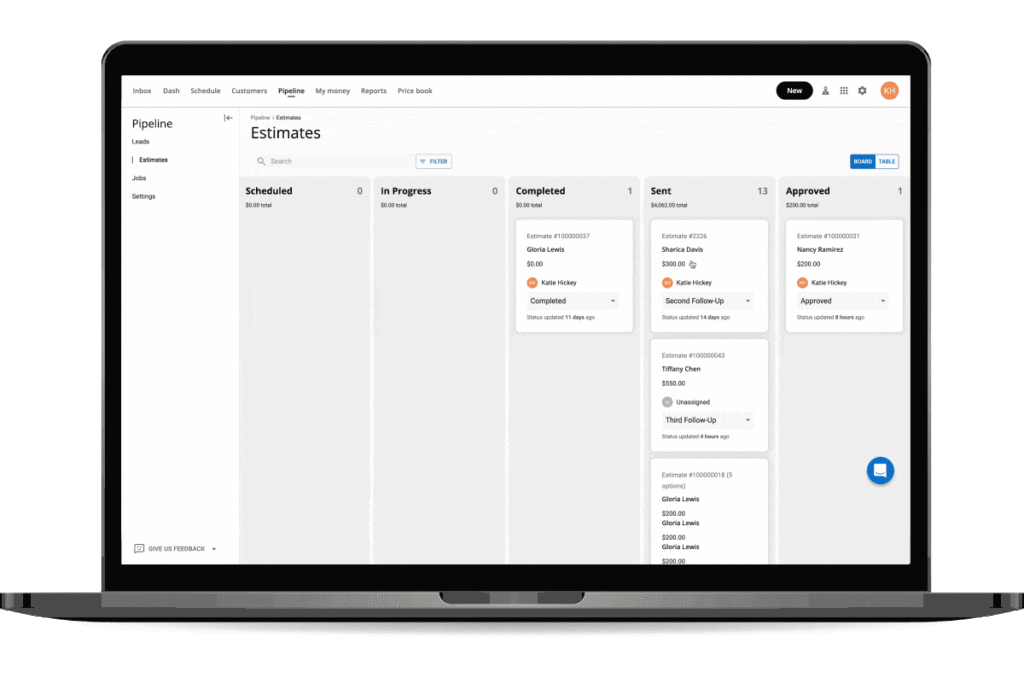
Housecall Pro’s pipeline tool eliminates the time-consuming nature of manual follow-ups by automating the entire process and providing tools to streamline your workflow. From lead capture to invoicing, Pipeline organizes your entire lead intake process. All your leads, estimates, and jobs are in one place, so you can manage them with ease and clarity. Here are a few ways Housecall Pro can help you close more deals with less effort:
- Visualize Your Sales Pipeline: Get a clear, visual dashboard of all estimates and proposals. Easily see the status of each one, whether pending, sent, approved, or needing follow-up—at a glance.
- Automated Follow-Up Reminders: Never miss a chance to close a deal with automated reminders to follow up on estimates or proposals that haven’t received a response.
- Track and Prioritize Hot Leads: Identify potential customers most likely to convert by tracking who has opened or viewed your proposals, helping you focus on the hottest leads.
- Seamless Communication: Send follow-ups, revisions, or thank-you messages directly through the platform. Keep all communication organized and professional in one place.
- Streamlined Approval Process: Make it easy for customers to approve estimates online, speeding up the decision-making process and improving your conversion rates.
- Insights and Reporting: Analyze proposal success rates to understand what’s working and where to improve. Track how many estimates convert into jobs and refine your strategy accordingly.
Housecall Pros’ customizable email and text message automation simplifies the sales process, ensuring no opportunity is missed. By skipping this time-consuming task, you free up valuable time to focus on increasing your revenue and growing your business.
Learn more: Convert more estimates to jobs with Pipeline from Housecall Pro
Sales Proposal Template for Small Businesses
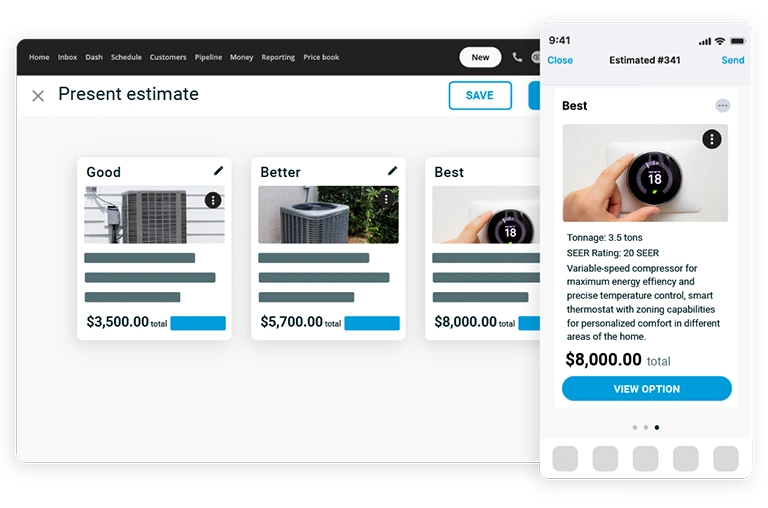
As a small business owner, there’s a good chance you’re already juggling all sorts of responsibilities, and adding sales proposal drafting to the mix might feel like too much. Producing polished and personalized proposals from scratch can be time-consuming, but with help from a customizable sales proposal template, this process becomes much easier.
With a template, you can ensure regularity, simplicity, and professionalism, even if this is your first time trying your hand at proposal writing.
Download Housecall Pro’s Sales Proposal Template
Not sure where to start or how to write a sales proposal? Download our free sales proposal template, which comes fully ready for customization. It’s:
- Completely customizable for your brand
- Print-ready and mobile-friendly
- Designed specifically for small business owners
Once you download the file, you’ll get a sales proposal template in Google Sheets. Enter the client’s information, adjust the proposal as needed, check things over, and tada! You’ll have a completely customized Google Sheets sales proposal template.
Deliver Winning Sales Proposals with Housecall Pro
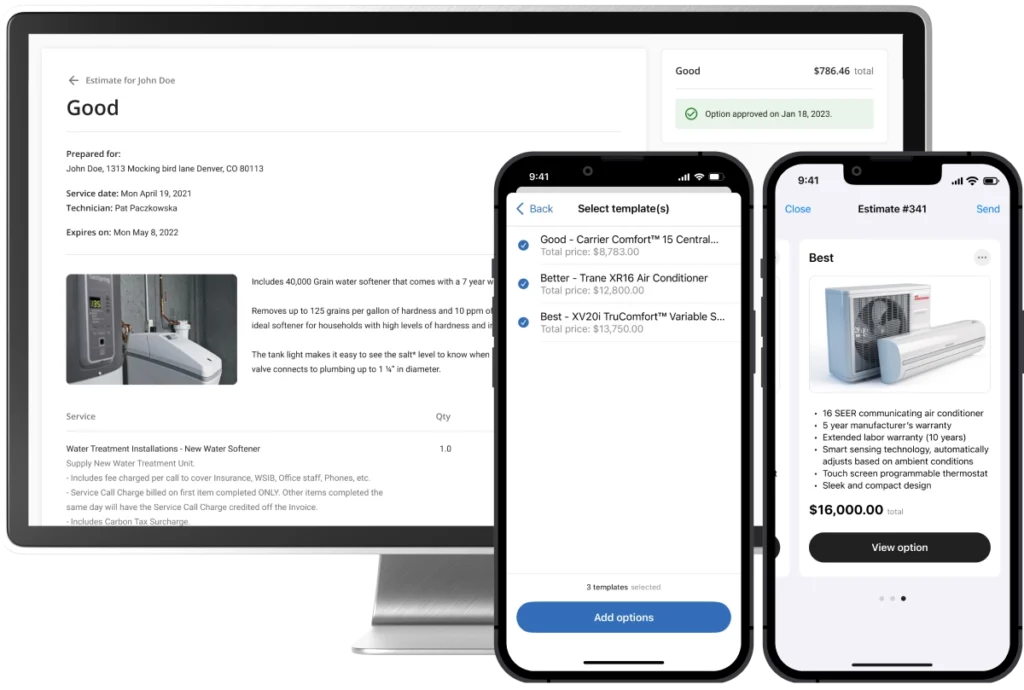
A great proposal is your business’s ticket to closing more deals. And, believe it or not, creating outstanding sales proposals doesn’t have to be a seemingly insurmountable and surprisingly intimidating task. With tools like ready-made, fully customizable templates, and Housecall Pro’s sales proposal software, you can streamline your process, save time, and close more deals faster.
Give proposal writing a go with Housecall Pro’s free template, or, for a more comprehensive solution to your proposal needs, try a free 14-day trial and test our proposal software. You’re only one click away from easier, more streamlined proposal writing.
The best part? Housecall Pro’s solution is more than just a proposal software. It comes with powerful business management tools to handle everything from payments and invoicing to scheduling and dispatching.


